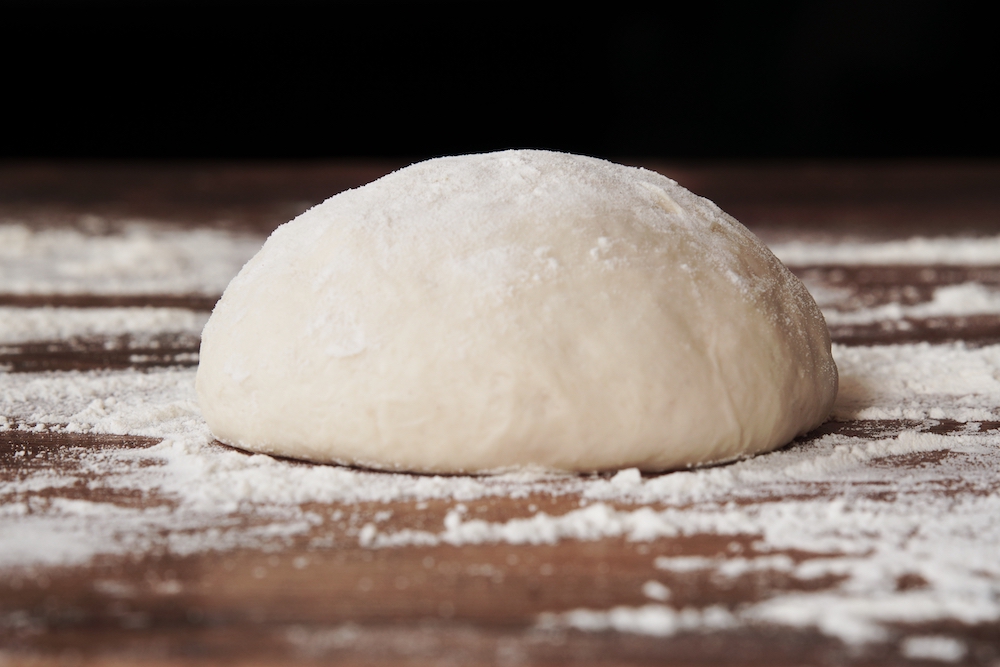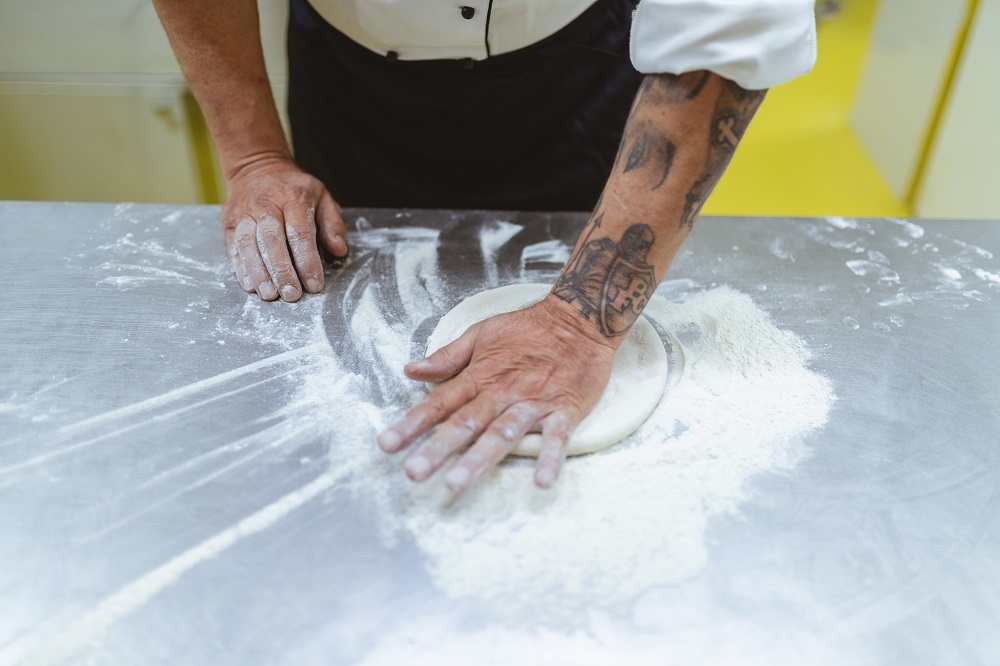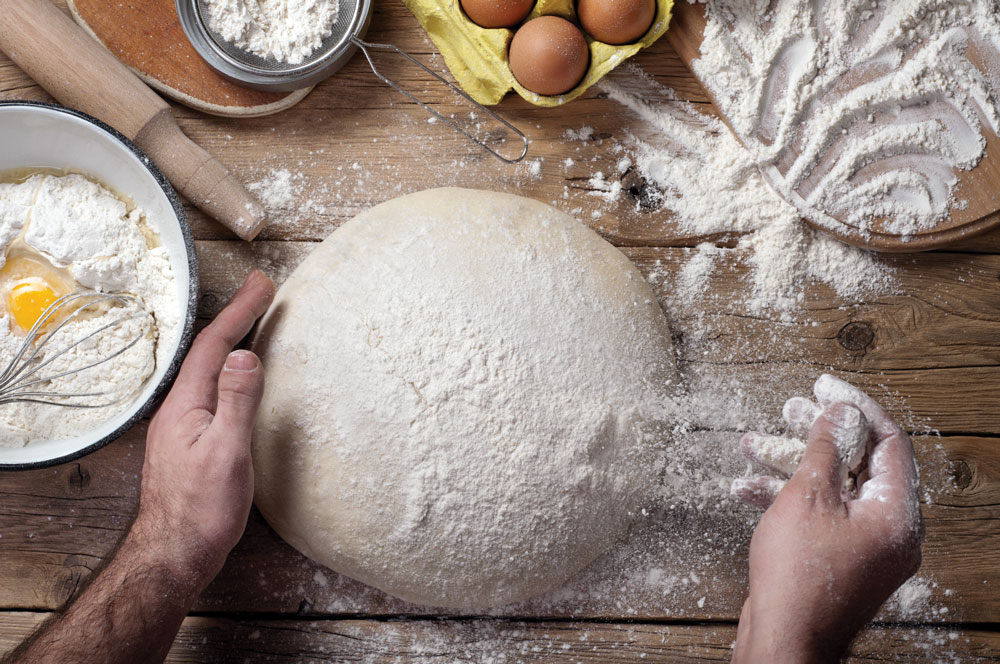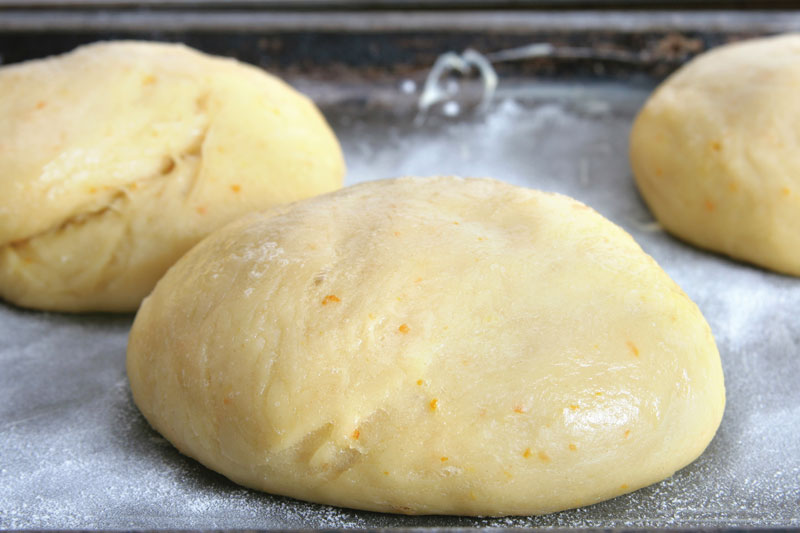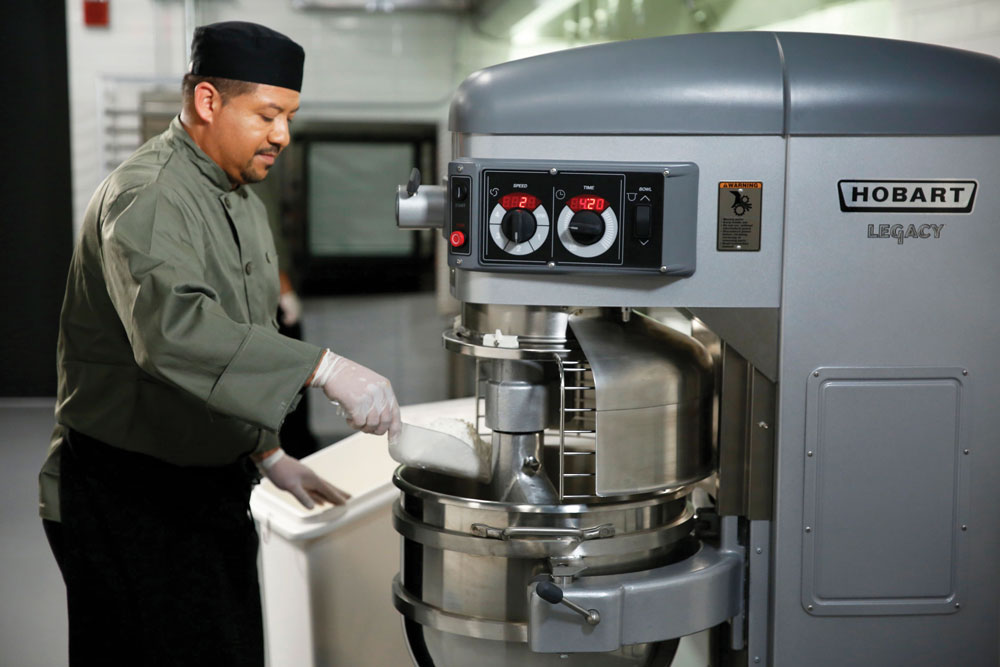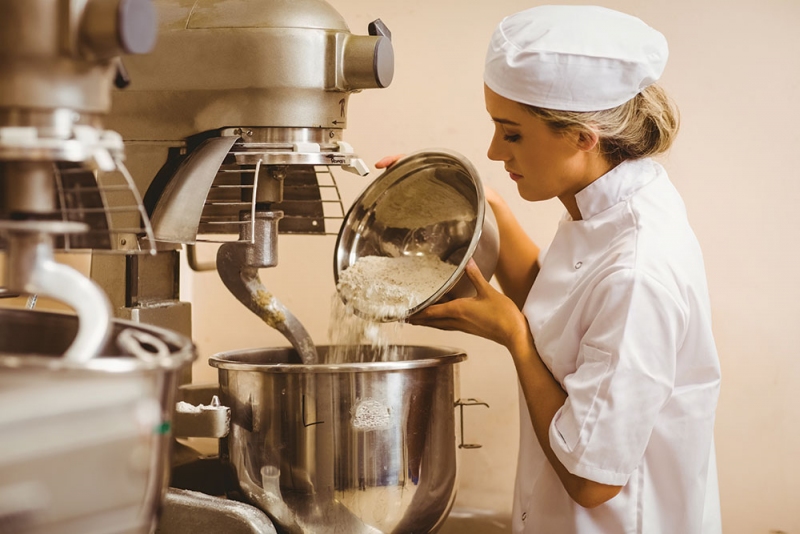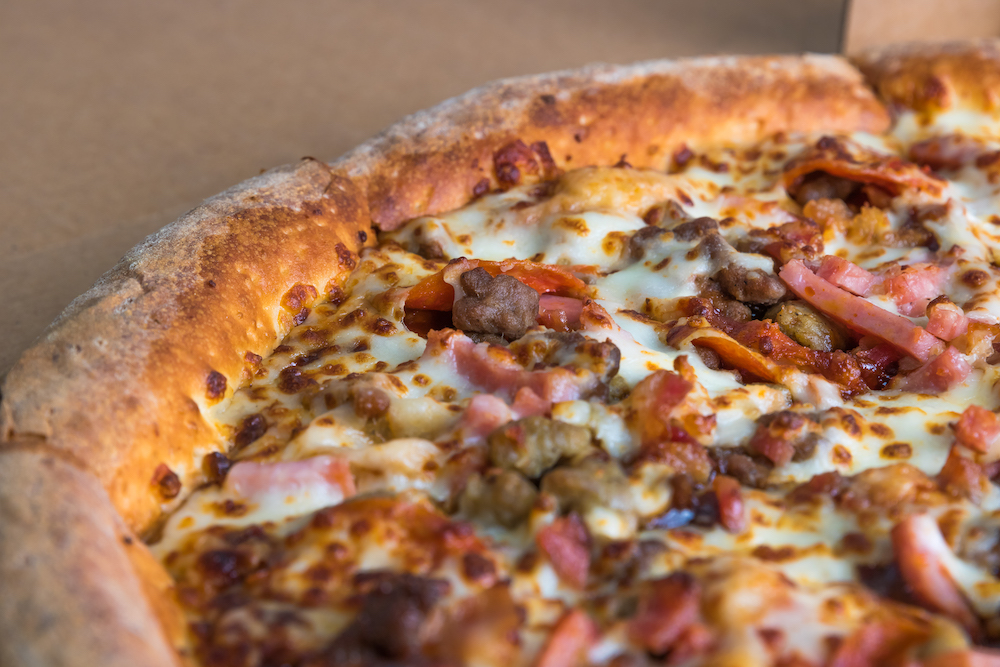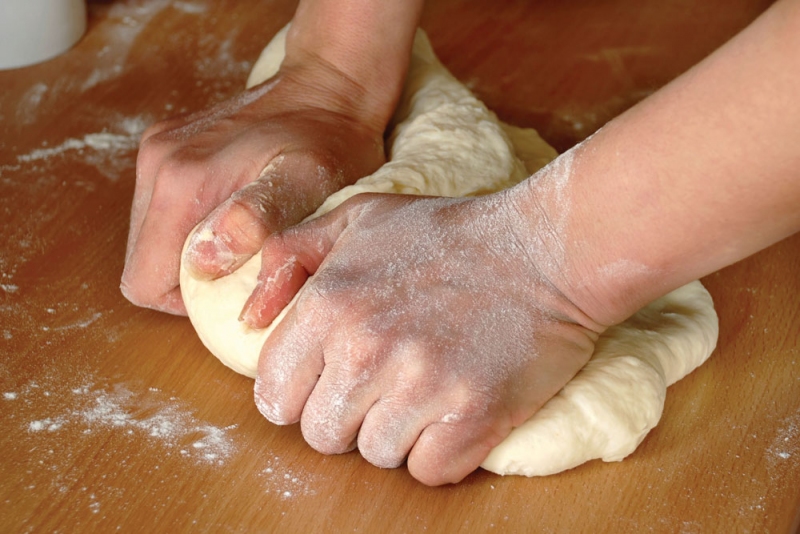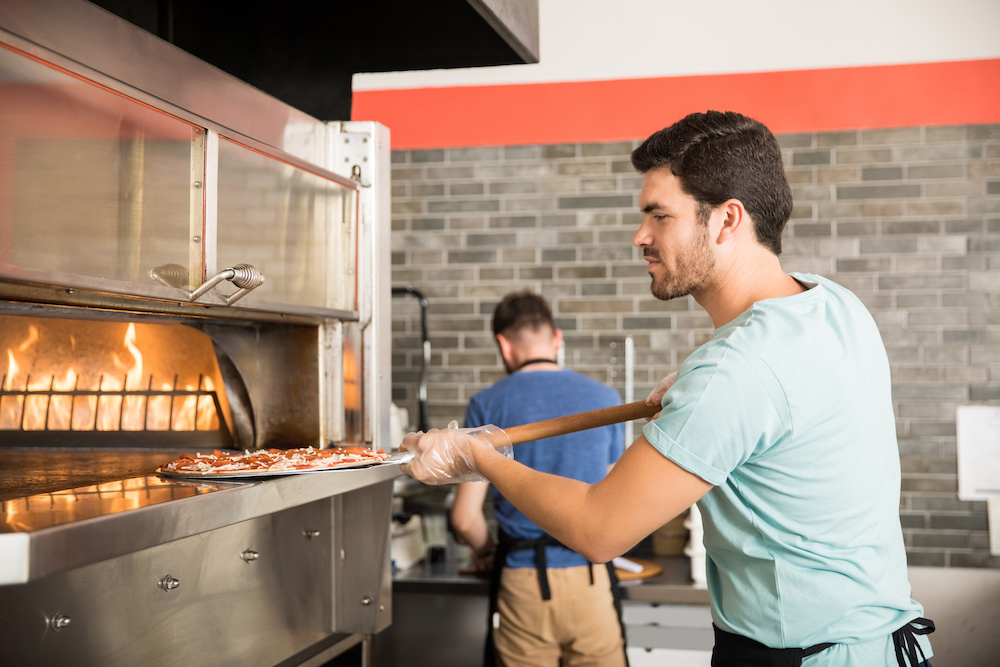Question:
Can I let my dough balls sit out and proof at room temperature for a period of time before putting them into the cooler for overnight storage?
Answer:
It really isn't advisable to let the dough balls proof for any amount of time before putting them into the cooler. The reason for this is because as the dough balls sit out and begin proofing (growing in size), they are developing a more open, porous internal structure. This open, porous structure actually makes the dough balls harder to freeze due to the fact that the porous structure is a better thermal insulator. This is much the same way that a thermal pane window works. The more porous the structure within the dough ball(s), the better its insulating properties, and the more difficult it is to cool down to that magic temperature of 45˚F, where fermentation will be arrested, or at least appreciably slowed down, allowing the dough to be held for an extended period of time in the cooler without over expanding or “blowing”. When we take the dough directly to the cooler very soon after mixing, the cell structure within the dough ball(s) is still quite dense and compact, with relatively poor thermal insulating properties. As a result, the dough will cool down more efficiently, and at a more predictable rate, which results in dough that can remain in the cooler for several days with satisfactory performance characteristics.
Along these same lines, another problem that I see when the dough balls are not taken directly to the cooler shortly after mixing is as follows—the dough is allowed to sit at room temperature for, say 60 minutes before being placed into the cooler. Depending upon circumstances, that 60 minutes could become 75 minutes or more, and if the dough temperature is not right at the targeted temperature, more or less fermentation than anticipated might occur during that period of time. This can affect the way the dough cools down in the cooler, which can/will affect its performance after extended refrigerated storage time.
Question:
From time to time I notice that there seems to be a bit of confusion in oven terminology between convection ovens and impingement ovens. What are the differences?
Answer:
While similar in one aspect, these two baking technologies are really quite different. The one way in which they are similar, and this is where the confusion seems to have originated, is in airflow. Both convection and impingement ovens use airflow to enhance the heat transfer/baking properties of the oven, but this is where the similarity ends. With a convection oven, the air is circulated throughout the oven by means of fans blowing the heated air around in the baking chamber. This heated air is generally focused towards the product being baked, but in some cases it is only circulated around in the baking chamber, blowing across the product being baked. Impingement baking, on the other hand, utilizes heated air being blown onto the product in highly focused columns. These columns of heated air strike, or “impinge”, the product at a right angle (90˚) from both the top and bottom of the product as it is conveyed through the oven. As these columns of heated air impinge upon the product, they disrupt the cooling layer of steam that surrounds the baking product. Since the steam can only attain a temperature of 212˚F, it is actually much cooler than the air within the oven. By sweeping this cool layer of steam away from the product, the heated air can reach the surface of the product being baked to achieve a better rate of heat transfer, which translates into a shorter baking time. One distinct advantage that impingement ovens have over convection ovens in the ability of the impinging air column to create waves on the surface of any water collected on the surface of the pizza. These mini waves serve to increase the surface area of the water, and thus increase its evaporative loss from the surface of the pizza during baking, resulting in a drier, crispier pizza. This is especially important when making pizzas with generous amounts of vegetable toppings.
The same impinging air column that gives the unique baking properties can also create some problems too. Some toppings may tend to scorch or burn as a result of being exposed to the rapid heat transfer properties of the collimated air. When this happens, it is a simple matter to change a portion of the air columns or block them off entirely with a black colored panel to achieve a more gentle radiant heating of the product. When the air columns are partially blocked off, significant changes can be made to the baking and heat transfer properties of those columns, allowing for a fine tuning affect of an oven to specific needs.
Changes can be made to affect the air flow characteristics of a convection oven too, but even with these changes, typical convection ovens are not well suited to the baking of pizzas. The main shortcoming of a convection oven in baking pizzas is its lack of ability to bake the pizza primarily from the bottom, a necessity in providing pizzas with a well baked, crispy bottom crust.

